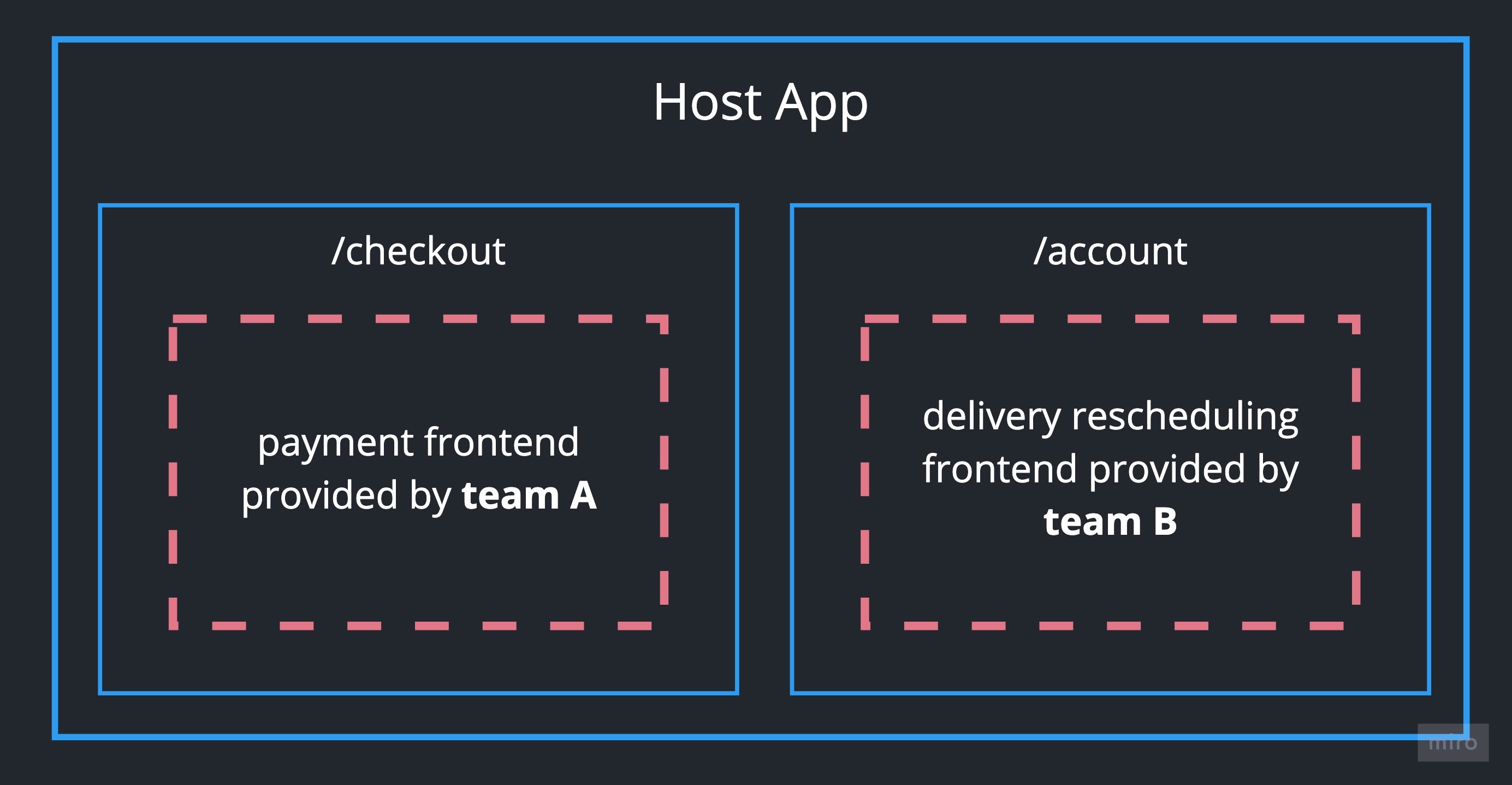About tiny frontend
Before we start
👍 What tiny frontend is
- a npm package pulling its latest deployed implementation at runtime
- An example of implementation of a micro frontend architecture
- Aimed at solving "horizontal" slicing
In one picture: we're trying to deploy the pink boxes independently of our host app:

🙅 What tiny frontend isn't
- The One True Way to micro frontend
- Aimed at solving "vertical" slicing
Philosophy
Guiding principles
This implementation is very inspired by the architecture we are using at Cazoo.
Here are a few guiding principles:
- ⚛️ Use the framework (in this case React) as the runtime glue
- 😌 Host shouldn't need anything special to consume a tiny frontend
- 💪 Be typesafe
- 👀 Ensure shared dependencies are compatible at build time
- ✅ Automatic opt-in for non-breaking changes
- 💥 Manual opt-in for breaking changes
When to use it
This approach works well in an environment where teams have clear domain boundaries and own their whole stack.
It is targeted at solving the "horizontal" slicing problem you can encounter in such environment: Team A wants to show a component on a page owned by Team B.
For example:
- Consumer finance team wants to show a financing calculator on some marketing page
- Payment team wants to show a payment component in the Checkout flow
- Logistics team wants to let customer reschedule their order in the My Account section
- Content team deploys a Header and Footer used throughout apps on the site
However, it doesn't aim at solving the "vertical" slicing problem: Team A and Team B own full apps on the domain, with client side navigation working between apps.
